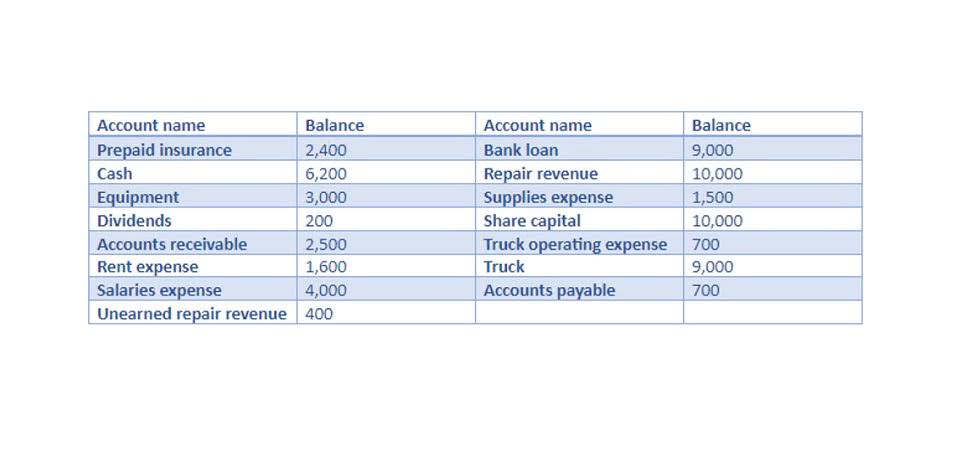
The WorldCom collapse was a significant corporate scandal that unfolded in the early 2000s, involving one of the largest telecommunications companies in the United States. double-entry accounting has two equal sides The scandal revolved around fraudulent accounting practices that artificially inflated the company’s financial performance and misled investors and regulators. Accountants call this the accounting equation, and it’s the foundation of double-entry accounting.
- Each T-Account represents a specific account, with the left side (debit side) showing increases, and the right side (credit side) showing decreases.
- However, if you enter a growth phase, want to bring on investors, or plan to apply for small business loans, you’ll want to consider switching to a double-entry system.
- The asset account «Equipment» increases by ₹1,000 (the cost of the new equipment), while the liability account «Accounts Payable» decreases by ₹1,000 (the amount owed to the supplier).
- The general ledger would have two lines added to it, showing both the debit and credit for $5,000 each.
The Roles of Debits and Credits

But, as a business owner, it is still a good idea to understand how the double-entry accounting system works and why you’re using it, even if your accounting software does all the work. Periodically, depending on the business, journal entries are posted to the general ledger. The general ledger is the exact same information as the journal, but sorted by account. Managing your financial records can be time-consuming, but it doesn’t have to be. By trial balance outsourcing bookkeeping, you can free up valuable time and resources, allowing you to concentrate on expanding your operations and serving your customers. The IRS allows most small businesses to choose either method, but double-entry works more naturally with accrual accounting, which offers a clearer long-term financial picture.
Debits & Credits in Accounting

In order to achieve the balance mentioned previously, accountants use the concept of debits and credits to record transactions for each account on the company’s balance sheet. Double-entry bookkeeping means that a debit entry in one account must be equal to a credit entry in another account to keep the equation balanced. Businesses use the double-entry system for every financial transaction, whether it’s a purchase, sale, payment, or cash receipt. This system provides a complete and accurate record of a business’s financial transactions. It allows the company to prepare financial statements, such as the balance sheet, income statement, and statement of cash flows. Accurate debits and credits are central to double-entry bookkeeping, and it’s your bookkeeper’s job to ensure each transaction keeps your accounts balanced and error-free.

How to get started with double-entry bookkeeping
This reflects the income earned from sales while maintaining balance in the accounting equation. T-Accounts, named for their shape resembling the letter “T,” are a powerful visual tool used in double entry accounting to depict the flow of transactions. Each T-Account represents a specific account, with the left side (debit side) showing increases, and the right side (credit side) showing decreases. T-Accounts provide an intuitive way to grasp the impact of transactions on individual accounts and understand the corresponding debits and credits. A double entry accounting system established the accounting equation where assets must always equal liabilities plus owner’s equity.

After recording the transactions, we now have a running record of all accounts, and hence a complete accounting system. Because of the two-fold or duality effect of transactions, the total effect on the left will always be equal to total the effect on the right. An important note to consider here is that a valid set of financial statements can still be prepared even if the accounting system is incomplete. But, it will require additional work to reconstruct the accounts to obtain complete information.
Role of accounts and ledgers in organizing financial data

In the double-entry accounting system, at least two accounting entries are required to record each financial transaction. These entries may occur in asset, liability, equity, expense, or revenue accounts. If the accounting entries are recorded without error, the aggregate balance of all accounts having Debit balances will be equal to the aggregate balance of all accounts having Credit balances. Regardless of which accounts and how many are involved by a given transaction, the fundamental accounting equation of assets equal liabilities plus equity will hold. T-Accounts play a vital role in error detection and maintaining the equilibrium in double entry accounting. If a transaction is recorded inaccurately, it disrupts the balance between the debit and credit sides of a T-Account.
- Regular reconciliation, review of journal entries, and implementation of internal controls can all help to prevent and detect errors and fraudulent activities.
- Double-entry provides a more complete, three-dimensional view of your finances than the single-entry method ever could.
- These include the different types of accounts and how debits and credits work together to keep your books balanced.
- Suppose ABC takes a short-term loan with a maturity period of 3 months for a total amount of $ 50,000.
- When a company borrows funds from a creditor, the cash balance increases and the balance of the company’s debt increases by the same amount.
- The WorldCom collapse led to increased scrutiny of accounting practices, the strengthening of regulatory oversight, and the implementation of reforms to prevent such fraud in the future.
To make double-entry accounting that much easier, check out BILL’s integration options today. The total debits ($1,000) must always equal the total credits ($1,000), ensuring the accounting system is accurate and error-free. The cash balance declines as a result of paying the commission, which also eliminates the liability. The reason your debit card is called a debit card is because the bank shows your balance as a liability because they owe your money to you—in essence, they are just holding it for you. On the other hand, the double-accounting system involves recording each transaction in two accounts—both a debit and a credit.
It ensures that every transaction’s impact is recorded in a balanced manner, maintaining the equilibrium Medical Billing Process of the accounting equation. This systematic approach minimizes the likelihood of errors and omissions while enhancing transparency and reliability. Accurate financial reporting is vital for stakeholders, including investors, creditors, and regulators, as it enables them to make informed decisions based on trustworthy data.

